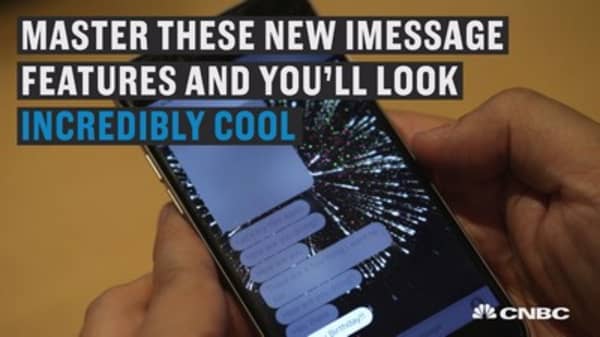Snapchat has some things iMessage lacks, like a social feed and a broadcasting platform.
That's fine. Apple doesn't need to copy every Snapchat feature.
Apple may not have a social feed, but it's already got a list of all your closest friends and family members: your contacts list. Instagram's co-founder Kevin Systrom told Recode that engaging with friends and family moves the needle much more than celebrities or other content.
And Apple isn't an advertising company and doesn't need advertising dollars. It just needs to be cool enough to get people to buy an iPhone. Eventually, folks may pay for other services, like Apple Music, because they work within the app. And users wouldn't have to deal with annoying ads in their personal messages.
Apple's software endeavors haven't always been executed perfectly. But Apple can afford to revolutionize messaging without worrying about stemming a $514.64 million loss and reviving a struggling stock.
Commentary by CNBC's Anita Balakrishnan.
For more insight from CNBC contributors, follow @CNBCOpinion on Twitter.





